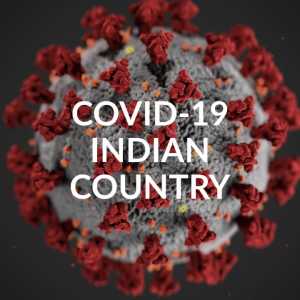
The Indian Health Service has updated its coronavirus data, showing results as of November 30, 2020.
According to the data, 106,393 tests have returned positive for COVID-19, the disease caused by the coronavirus. That represents an increase of 2.05 percent from the 104,256 cases previously reported by the IHS.
Altogether, 1,382,730 coronavirus tests have been administered within the IHS through November 30, the data shows. That marks an increase of 0.95 percent from the day prior.
Since mid-October, the IHS has been providing additional information about the spread of the coronavirus within the system. The cumulative percent positive column shows the historical COVID-19 infection rate, meaning the number of tests that have returned positive since the onset of the pandemic.
Based on the cumulative percent positive, the highest rates have been seen in the Navajo Area (14.3 percent), the Phoenix Area (12.9 percent), the Oklahoma City Area (10.2 percent), the Great Plains Area (10.1 percent) and the Albuquerque Area (10 percent). The first two regions include the state of Arizona, indicating a disproportionate toll of COVID-19 in the state.
The 7-day rolling average positivity column offers a more contemporary look at the impact of the coronavirus. The data shows where COVID-19 cases have been increasing recently.
Based on the 7-day rolling average positivity, five regions have seen dramatic increases in COVID-19 cases. They are: the Albuquerque Area (26.4 percent), the Great Plains Area (24.3 percent), the Billings Area (21.7 percent), the Bemidji Area (18.6 percent) and the Oklahoma City Area (18.4 percent).
Overall, 8.3 percent of IHS tests have been positive since the onset of the pandemic, the data shows. The 7-day average has grown higher over the last couple of months and now stands at 14.5 percent.
We continue laying the necessary groundwork for the distribution of a safe and effective #COVID19 vaccine in #IndianCountry. The success of a vaccine program for tribes & urban communities depends on the strong partnerships between the federal government, tribes & urban leaders. https://t.co/oKytK5GEyP
— IHS Director Roselyn Tso (@IHSDirector) December 1, 2020
The data, however, is incomplete. While 100 percent of facilities run directly by the IHS are reporting data, only 33 percent of tribally managed facilities and 44 percent of urban Indian organizations are doing the same, the agency has told Indianz.Com.
The agency also provided to Indianz.Com the service population for 2019: 2,562,290. Based on that figure, nearly 54 percent of American Indians and Alaska Natives have been tested for the coronavirus since the IHS began reporting data in March.
The IHS user population, on the other hand, is a much smaller number. As of 2019, 1,662,834 American Indians and Alaska Natives have lived within a service delivery area and have received health care at an IHS or tribal facility during the previous three years.
Based on the user population, almost 83.2 percent of Native Americans have been tested for the coronavirus since the IHS began reporting data in March.
COVID-19 Cases by IHS Area
Data are reported from IHS, tribal, and urban Indian organization facilities, though reporting by tribal and urban programs is voluntary. Data reflect cases reported to the IHS through 11:59 pm on November 30, 2020.
|
IHS Area
|
Tested
|
Positive
|
Negative
|
Cumulative
percent
positive *
|
7-day rolling
average
positivity *
|
|---|---|---|---|---|---|
| Alaska | 357,694 | 7,282 | 303,053 | 2.3% | 3.8% |
| Albuquerque | 70,115 | 5,609 | 50,333 | 10.0% | 26.4% |
| Bemidji | 95,745 | 6,666 | 86,659 | 7.1% | 18.6% |
| Billings | 79,351 | 6,266 | 68,984 | 8.3% | 21.7% |
| California | 32,843 | 2,271 | 29,128 | 7.2% | 10.1% |
| Great Plains | 107,643 | 10,807 | 95,876** | 10.1% | 24.3% |
| Nashville | 41,558 | 2,956 | 37,681 | 7.3% | 5.8% |
| Navajo | 153,705 | 18,230 | 109,372 | 14.3% | 17.5% |
| Oklahoma City | 273,779 | 27,275 | 241,137 | 10.2% | 18.4% |
| Phoenix | 110,078 | 14,141 | 95,163 | 12.9% | 16.5% |
| Portland | 49,706 | 3,967 | 44,838 | 8.1% | 11.4% |
| Tucson | 10,513 | 923 | 9,492 | 8.9% | 12.9% |
| TOTAL | 1,382,730 | 106,393 | 1,171,716 | 8.3% | 14.5% |
** Great Plains negative test data decreased due to data reconciliation.
* Cumulative percent positive and 7-day rolling average positivity are updated three days per week.
Source: https://www.ihs.gov/coronavirus (Indian Health Service)
